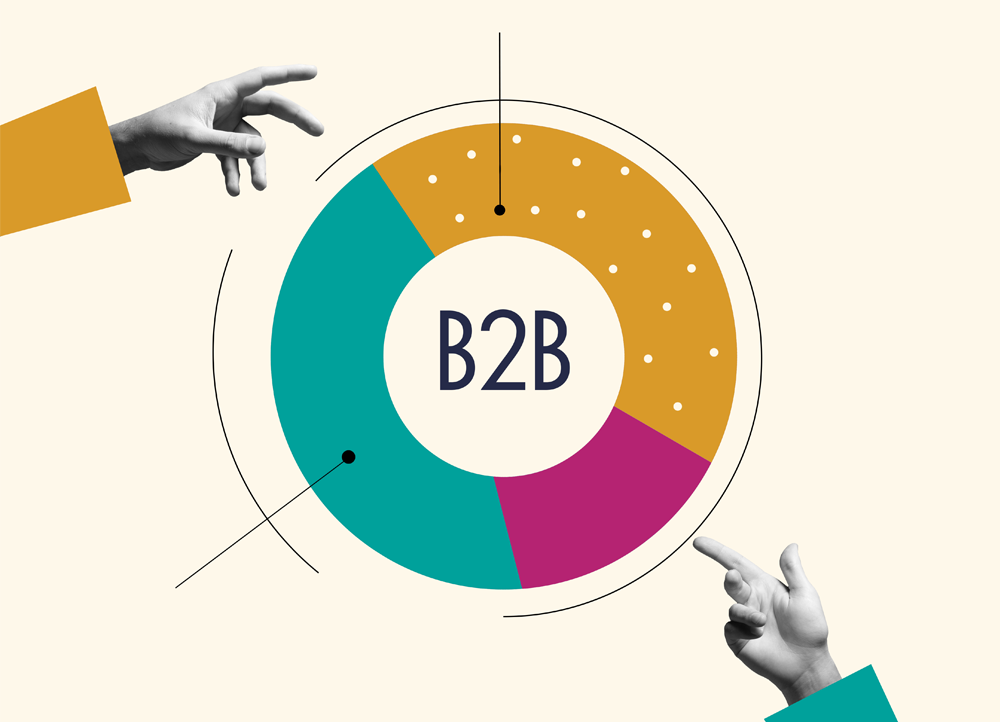It’s now well into the fourth quarter of the year – the time when most organisations are in the thick of business planning for 2023. This may be a particularly challenging exercise for B2B marketing executives in the face of highly uncertain economic conditions, the threat of a recession, on-going geo-political problems and near run-away inflation coupled with sky-rocketing interest rates.
Despite the challenges, the task remains the same for B2B marketers who need to raise brand awareness & consideration, create product / service differentiation (if possible), generate leads to help drive sales / revenue growth and track the effectiveness and efficiency of their marketing spend.
Possibly the greatest challenge is to convince sceptical C-Suite executives that marketing can (and should be) much more than a tactical exercise that is purely an expense. If properly planned and executed – B2B marketing can be an enterprise-level strategic growth driver and viewed as an investment that pays positive returns over the long-run. But this can be a tall order if not planned, presented, and then executed properly.
Here are the top 7 challenges / opportunities for B2B marketing executives to consider going into the 2023 business planning cycle, feel free to use it as a checklist:
1. Create a strategic annual marketing plan
As the old saying goes “If you don’t know where you are going, any road will get you there.” This idea certainly holds true for marketing efforts. A well-conceived marketing plan is a strategic roadmap that a business uses to organise, execute, and track their marketing efforts over a given period. The plan should have clear marketing objectives that are tied to the overall enterprise business objectives. Marketing strategies should then address specific initiatives intended to help achieve the objectives – like a new product launch campaign. Marketing tactics follow each strategy on how for example individual campaigns will be created. The marketing plan should include KPIs (key performance indicators – like “leads generated”) and a line-item budget.
It’s also a good idea to start the whole process with a SWOT analysis (strengths / weaknesses and Opportunities / Threats) that list both relevant internal and external factors and identify your competition. Roles and responsibilities should also be clearly identified for both internal (examples: marketing vs. sales) and external players (like the advertising agency).
2. Create a clear strategic positioning for your brand / product offerings
The marketing and communications plan should reflect a clear strategic positioning for the overall brand. It outlines exactly what your company does, for whom and what makes you different. Ideally, this should be stated in benefit-based terms. This will create a unique niche for your brand in the mind’s eye of your target audiences.
This simple template can help get you started:
For (Primary Target Audience Segments) ____________________ the
(Brand / Product Name) _________________ is the (Insert Point of Difference) __________
Among all (insert frame of reference) because (provide reasons to believe) _____________
3. Clearly understand the potential economic value your target segments
A sound segmentation scheme should be part of the strategic marketing plan. It will identify your highest value segments (often starting by up-selling / cross-selling your current customers) and help guide the development of the marketing plan and then prioritise initiatives. Research can often provide insights into target needs and buying motivations. It helps you to clearly understand the needs your products / services are designed to meet, and then empowers you to talk to prospects in these terms. Benefits will always work harder at selling your brand vs. just talking product / service features.
Your targets should be identified by company, title / job description, location and if possible, by name. This will allow your company to personalise your marketing messages using your CRM.
A CRM / Customer Relationship Management tool (like Salesforce) is key for B2B marketing success. It will help track your current customer base and prospects. It can play a critical role in integrating sales and marketing efforts and help optimize marketing spend tracking the KPIs you have set up.
4. Optimize your digital presence
It is critical for marketing to optimize the digital presence of the company and its offerings. It starts with basic SEO / Search Engine Optimization – which makes it easier for your company to found online. There are a variety of SEO tools available – they start with identifying the best keywords that allow you to target a specific audience with content that pushes them through to the next stage of the sales funnel.
If possible – make sure your website is more than “brochure-ware” by developing and posting original thought leadership content. This will allow you to demonstrate your expertise and ability to meet the needs of your target audience.
SEM / Search Engine marketing can help drive traffic to your website as well – keeping in mind SEM for B2B involves a purchase journey that can take weeks or months with multiple touchpoints both on and off the web.
Providing visitors an incentive to engage with the website can be very effective. One of the best ways to do this is with a “gated offer” – such as a free whitepaper report or webinar signup – which gets sent to your visitor after they have filled out a lead capture form.
Regularly posting blog content on your own website and on B2B social media sites (Like LinkedIn and Twitter) is a great way to engage audiences. This content is typically an authoritative report or guide on a subject that is of interest to your future customers.
5. Generate and nurture quality leads – to help drive revenue growth
Generating and nurturing leads is one of the most critical functions of B2B marketing. It helps if you can proxy the customer journey, first by capturing and recording all relevant information inquiries and genuine leads in your CRM tool.
This starts the process of marketing and sales working together to move the prospect down the “sales funnel” from awareness / interest to RFI / RFP activity and eventual sales. Be sure to review your lead-generation marketing efforts ahead of time with your sales organisation, so everyone is on the same page – so to speak.
The marketing communications should mirror the way your company’s products / services are being presented by your salespeople.
6. Demonstrate Marketing ROI using Data
There is an old saying on Wall Street that can serve today’s CMOs and other senior marketing executives well “Demonstrate value then go for the ask.” In these uncertain economic times most business expenses are undergoing intense scrutiny as budgets are created and approved for 2023. Again, marketing can and should be viewed as an investment that pays returns versus being a pure expense.
Employing effective B2B marketing KPIs (Key Performance Indicators) is a great way to win over sceptical C-Suite executives. Simple calculations like cost-per-inquiry, cost-per-lead and cost-per-customer acquisition are good place to start. Just take the marketing campaign expense and divide the number of inquiries / leads / customers wins to arrive at these metrics.
You will need a good CRM platform to help track marketing program attribution (like Salesforce.com). Often it pays to start with some smaller scale marketing campaigns to demonstrate success. Taking a prudent approach from a cost standpoint also helps demonstrate fiduciary responsibility on the part of the marketing team – which most C-level executives will greatly appreciate.
7. Keep Up with Emerging Trends
It’s hard with the day-to-day pressures of running a marketing organisation to think “over the horizon” in terms of emerging trends. In the B2B arena these might include testing live-stream and video-based content, trying user-generated content, or trying “agile” marketing that involves rapid iterations rather than one big project and real-time / flat organisational collaboration (over silos and hierarchy).
You might also seek to deliver more consistent and improved User Experiences across devices (websites / mobile applications / B2B social media) that deliver a positive experience and better fulfil the users’ needs. You might also want to test interactive content – in essence two-way experiences. These can include interactive infographics, quizzes, games, calculators, assessments, and interactive maps. A low-cost / high impact content strategy will be more effective at getting a potential customer’s attention than simple static content.
Don’t be afraid to test a bunch of different approaches. Remember why you got into marketing in the first place – it is supposed to be exciting, creative and fun.
Share and tag us @alwaysbecontent








